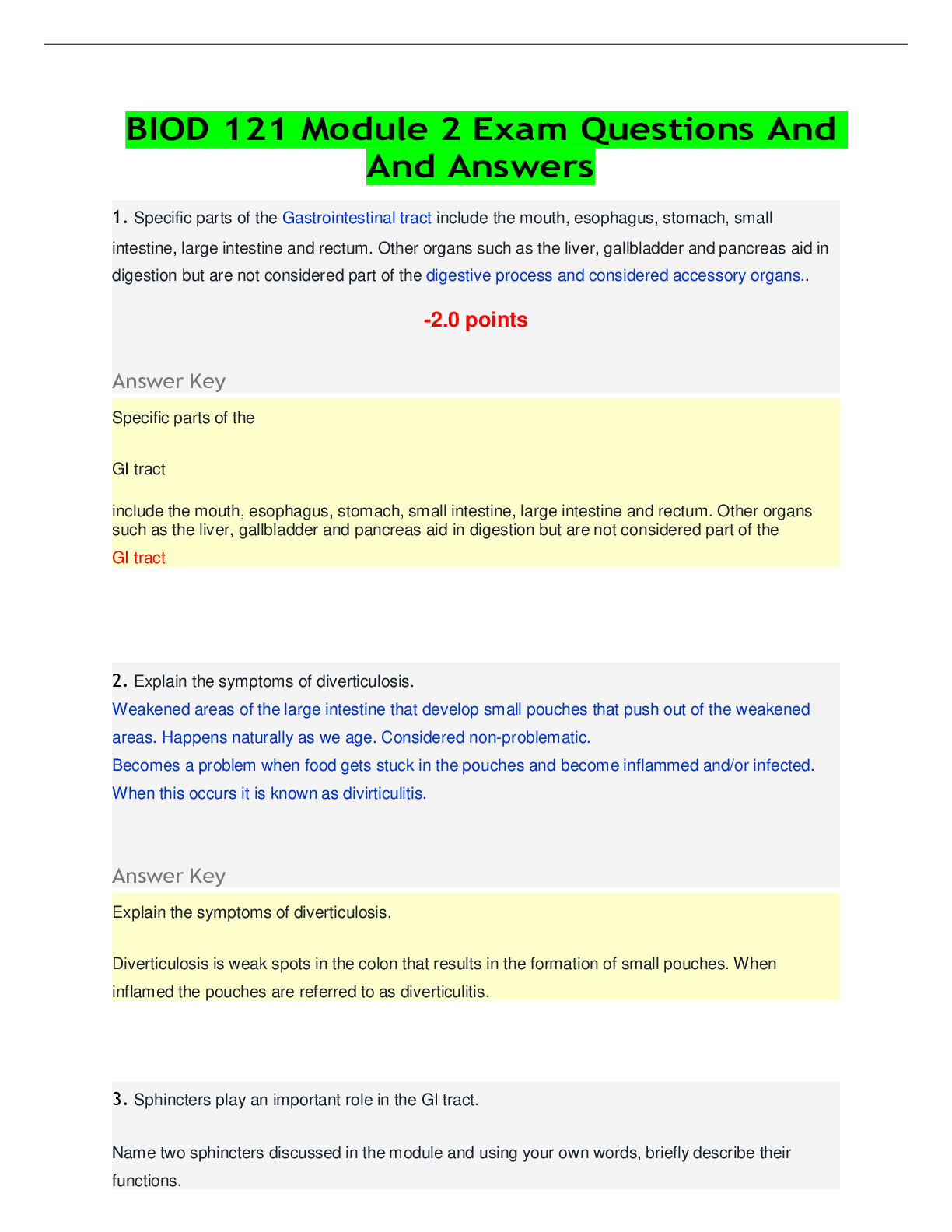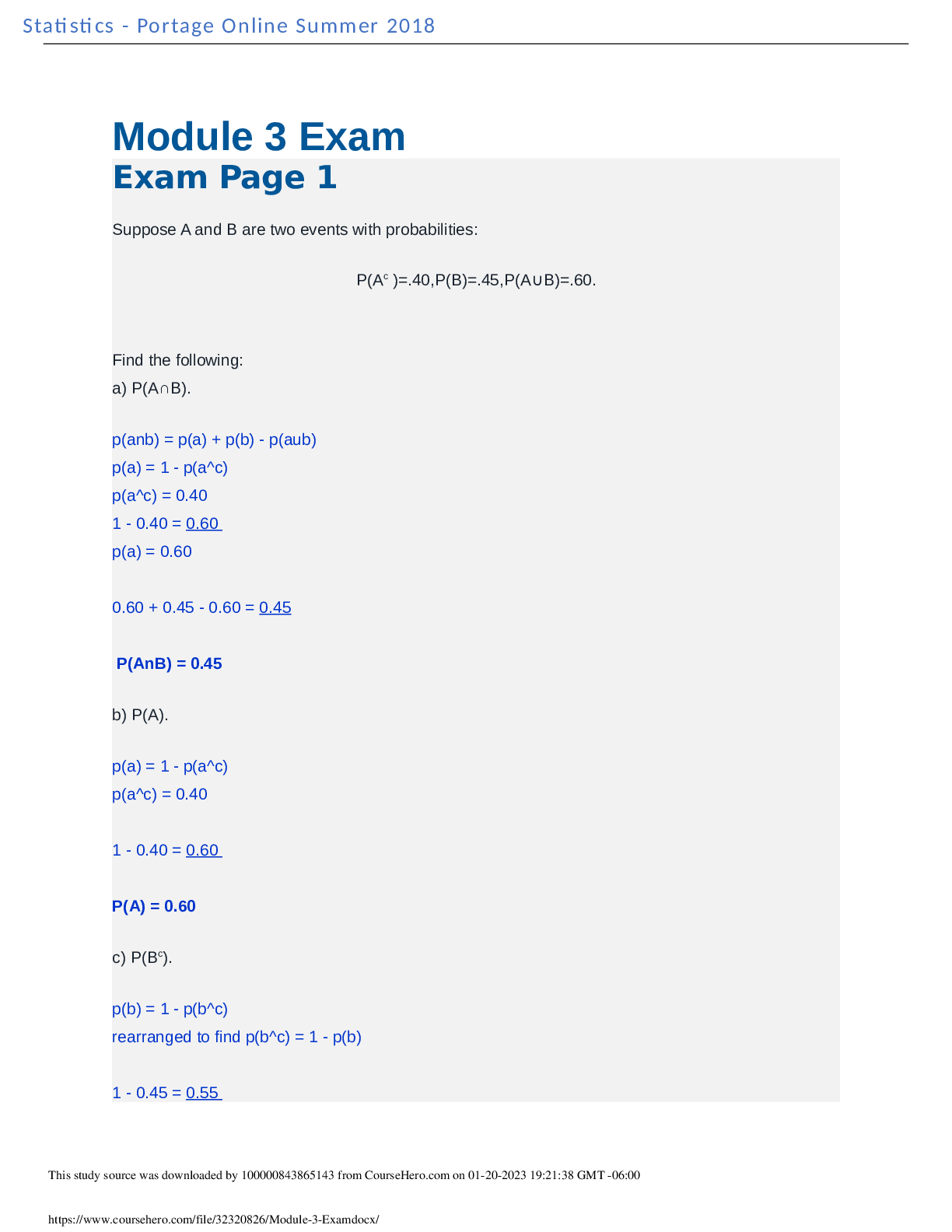A&P 1 101 Module 3 Exam (GRADED A+) Digestive System Test- Portage Learning
Document Content and Description Below
A&P 1 101 Module 3 Exam (GRADED A+) Digestive System Test Explain why a patient with liver disease would have intolerance to fatty foods. Your Answer: They would have an intolerance to fatty food... because one of the livers primary functions is to produce bile. If the person has a diseased liver than they probably cannot produce a normal amount of bile. Bile is used to break down fat so that it can be digested and used for energy. If it can't be broken down than the person will have isses with fatty foods. The liver produces bile which breaks down fats. If it is not producing bile (or less bile), fats will not be broken down effectively. Explain in detail how the stomach contents enter the small intestine. Your Answer: The pyloric sphincter is located at the base of the stomach. When it relaxes a small amount of chyme is able to pass through into the small intestine. Then there is a reflex that causes it to close temporarily. When it relaxes the procces starts over again. Its a slow process. The pyloric sphincter (valve), located at the base of the stomach, relaxes causing a small quantity of chyme to pass through the opening into the first part of the small intestine. This initiates a reflex that causes the muscles of the sphincter to contract and close the opening temporarily. Then the sphincter relaxes again and allows more chyme to enter. Look carefully at the diagram below. Label the following 5 organs of the digestive system. To receive credit for the intestines you must label the specific region. 3: 4: 7: 9: 10: Your Answer: 3-stomach 4-gallbladder 7-jejunum 9-appendix 10-rectum 3: Stomach 4: Gallbladder 7: Jejunum (not small intestine) 9: Appendix (not large intestine) 10: Rectum (not large intestine) A patient is experiencing vitamin toxicity. What type of vitamin would be causing this toxicity? Explain your answer. A. Water soluble vitamin B. Fat soluble vitamin C. All of the above Your Answer: A person experiencing vitamin toxicity more than likely has build up of fat soluable volumes. These vitamins are stored in the body fat and do not leave the body as quickly as water soluable vitamins. B. Fat soluble vitamin. Fat soluble vitamins are stored within the body’s fat stores making it harder for the body to rid itself of them. Explain which digestive system functions are carried out by the small intestine. Your Answer: The primary function of the small intestine is absorbtion of nutrients. Digestion: Chemical and mechanical: In the small intestine chemical digestion continues as enzymes from the pancreatic juices break down starches and proteins, and begin digestion of fat. Mechanical digestion continues as bile breaks down fat into smaller pieces. Absorption: begins as digested food molecules, water and fat are absorbed into the bloodstream. Note: Essay answers must clearly be in your own words. Answer the following essay question: Describe parietal cells and chief cells: name their location, secretions and purposes. Your Answer: Parietal and cheif cells are located in the epithelial cells of the stomach. Parietal cells secrete hydrochloric acid which helps to break down food. Cheif cells secrete pepsinogen which is then converted into pepsin which is an enzyme used to digest proteins. The parietal cells (located in the wall of the stomach body) secrete hydrochloric acid, generating a pH of 1.3-3.5. This very acidic pH kills many of the bacteria ingested along with food. In addition, the low pH stops the activity of salivary amylase. The secretion of hydrochloric acid is essential in the activation of pepsin. Chief cells: secrete pepsinogen. Pepsinogen (a pre-enzyme) is secreted by the chief cells in the stomach. Hydrochloric acid converts the inactive pepsinogen (secreted by the chief cells) into the active enzyme pepsin which begins the breakdown of proteins. Match the digestive organ with the one substance it produces: Pancreas Lipase Liver Mouth Urea Salivary amylase Other Incorrect Match Options: • Vitamin E • Chyme • Pepsinogen What is the purpose of the hormone Leptin? Increase hunger, decrease satiety Increase hunger, increase satiety Decrease hunger, increase satiety Decrease hunger, decrease satiety Which of the following statements is false? The ileocecal valve controls the entrance of chyme into to the large intestine. Taste buds are located on the surface of the mouth and the wall of the pharynx. The liver, pancreas, and tongue are considered accessory organs to the digestive system. The stomach is located along the right side of the abdomen below the diaphragm. (It is located along the left side of the abdomen below the diaphragm) Lipids can be divided into two categories: complete or incomplete. True False (Proteins can be divided into these two categories) True/False: Anabolism combines smaller molecules to make larger molecules. True False True/False: The oropharynx is the most superior region of the pharynx. True False (The nasopharynx is the most superior region) True/False: The pharynx has three types of skeletal muscle: circumferential, longitudinal and oblique. True False (It only has two; it does not include an oblique layer) True/False: The oblique layer of the stomach churning food into smaller pieces is an example of mechanical digestion. True False Label the following three types of raised bumps on the tongue. Describe the purpose of type B. A: B: C: Describe B: Your Answer: Circumvallate papillae have many taste buds A: Filiform papillae B: Circumvallate papillae C: Fungiform papillae Describe B: Papillae are raised bumps on the tongue. The three types of papillae help to grip food on the tongue: circumvallate, fungiform and filiform. Circumvallate papillae contain taste buds. Which of the following statements is true concerning glycolysis? Pyruvic acid are broken down into glucose. Two ATP molecules are formed in first breakdown of glucose. Glucose is broken down into three pyruvate molecules. Glucose is broken down into two sucrose molecules. Which of the following statements is true concerning the second stage of glucose breakdown? This is also known as proton motive force. Fermentation takes place here with oxygen present. Two additional ATP are formed along with other electron carriers. Glucose molecules are formed. Which of the following statements is false concerning the Electron Transport System? Anaerobic respiration is more efficient than aerobic respiration. Approximately a total of 34 ATP are formed. Protons are pumped out of the inner mitochondrial membrane. The proton motive force forms ATP molecules. Label the diagram below, including left or right. Discuss the purpose of tooth (B). A: B: C: F: Purpose of tooth type B: Your Answer: B- the pre molars are designed for crushing food. A: Mandible B: Right Molar C: Right Premolar (bicuspid) F: Right Central Incisor Purpose of tooth type B: Flat molars for crushing food Match the structure with the best description: Uvula: Connects mouth to esophagus Forms food into a bolus Attaches to the lesser omentum Stores glycogen and produces urea Attached to the soft palate Match the structure with the best description: Stomach: Hangs from the cecum Connects mouth to esophagus Attaches to the greater omentum Contains the hepatic flexure Site of the ileocecal valve Match the structure with the best description: Submucosal (layer of tissue): Made of two layers of muscle Innermost layer Secretes mucous Contains blood and lymph vessels Begins in the mouth Question 23 2 / 2 pts Match the structure with the best description: Enamel: Lies below the gum line Innermost layer Largest portion of each tooth Contains nerves and vessels Located on the surface of the crown Match the structure with the best description: Common Bile Duct Contains secretions from the pancreas Joins with the pancreatic duct Enters the jejunum Contains secretions from the salivary glands Contains lymph vessels and nerves [Show More]
Last updated: 1 year ago
Preview 1 out of 12 pages
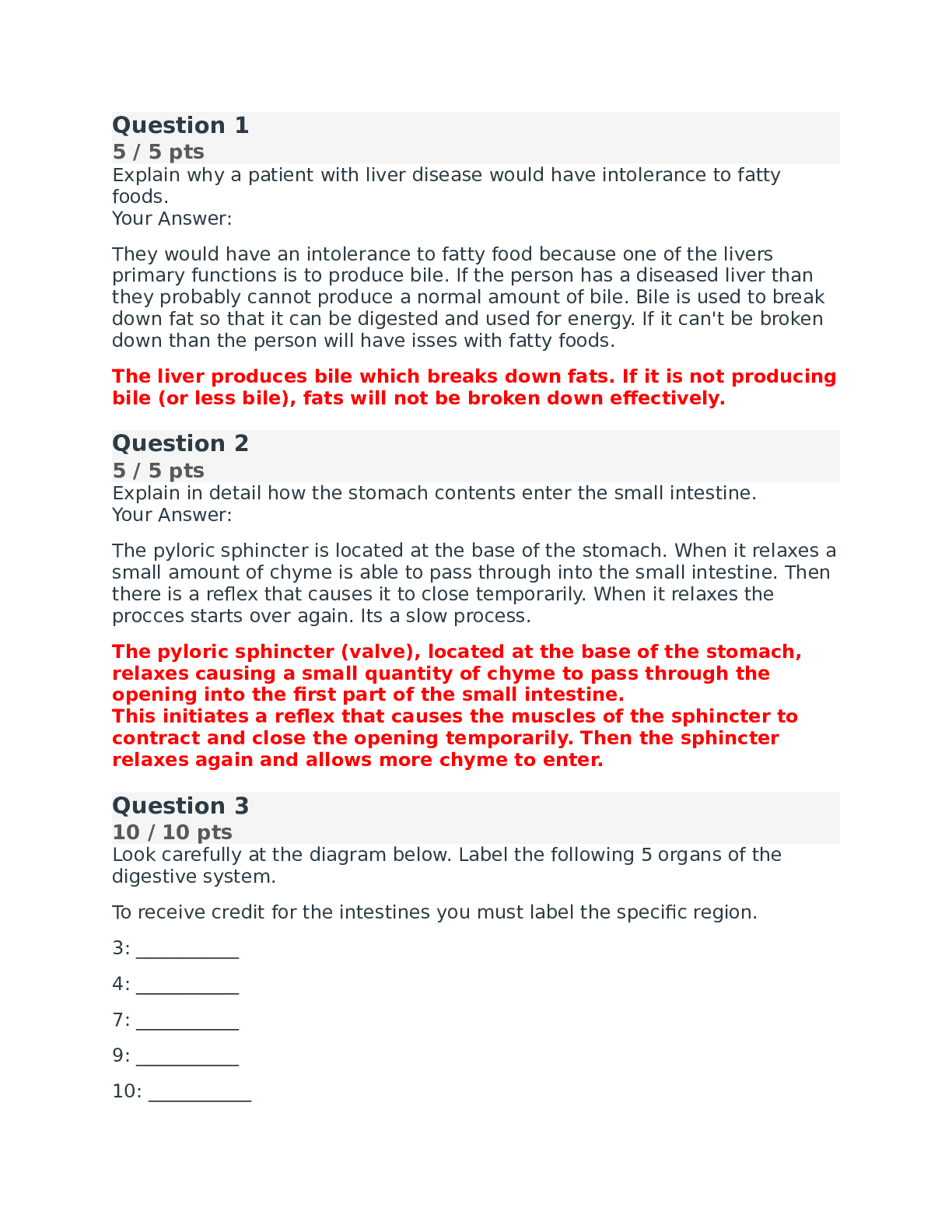
Also available in bundle (1)
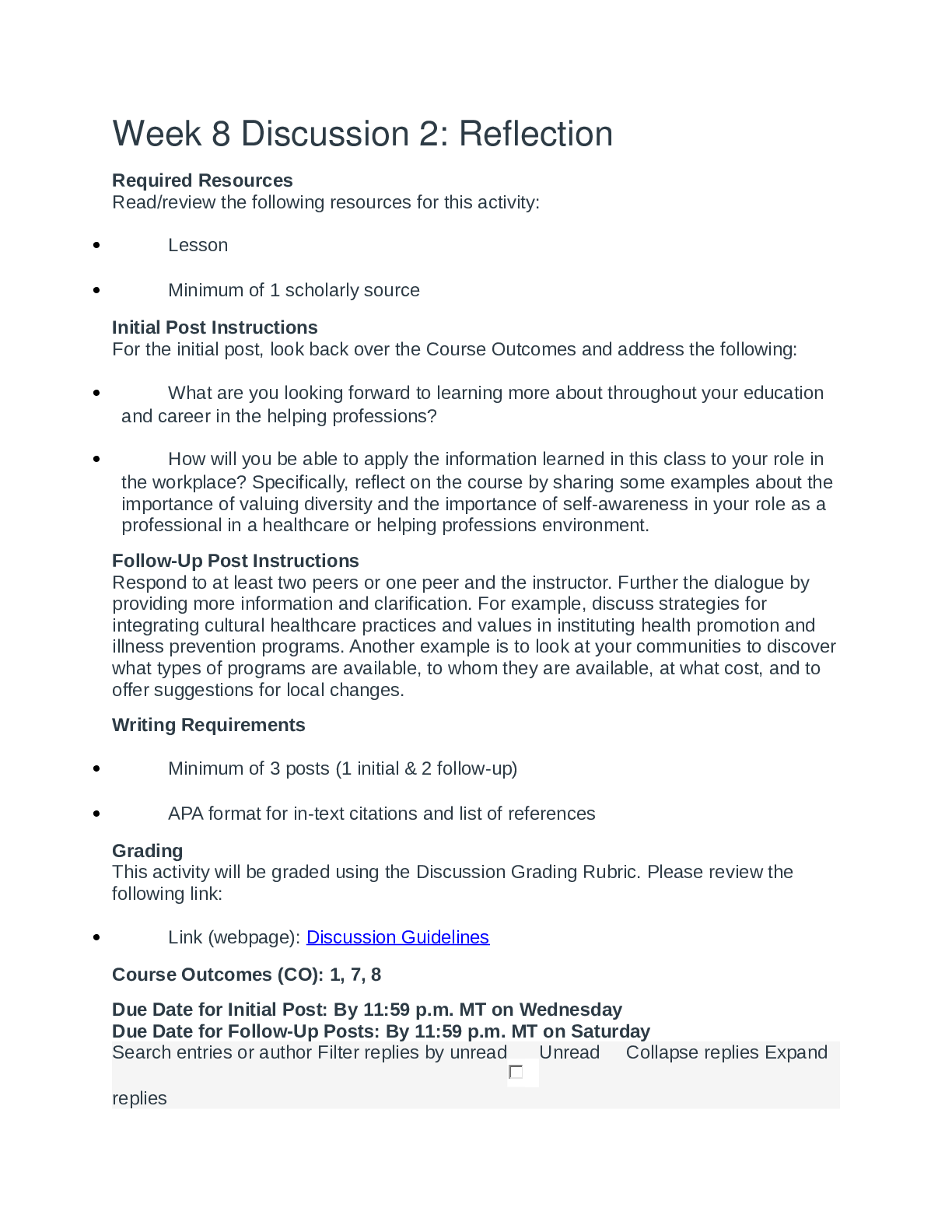
A&P 1 101 Module 1-8 Exam BUNDLE (GRADED A+) Comprehensive set Portage Learning 2021
A&P 1 101 Module 1-8 Exam BUNDLE (GRADED A+) Comprehensive set Portage Learning 2021
By A+ Solutions 2 years ago
$13.5
23
Reviews( 0 )
Document information
Connected school, study & course
About the document
Uploaded On
Aug 19, 2021
Number of pages
12
Written in
Additional information
This document has been written for:
Uploaded
Aug 19, 2021
Downloads
0
Views
64

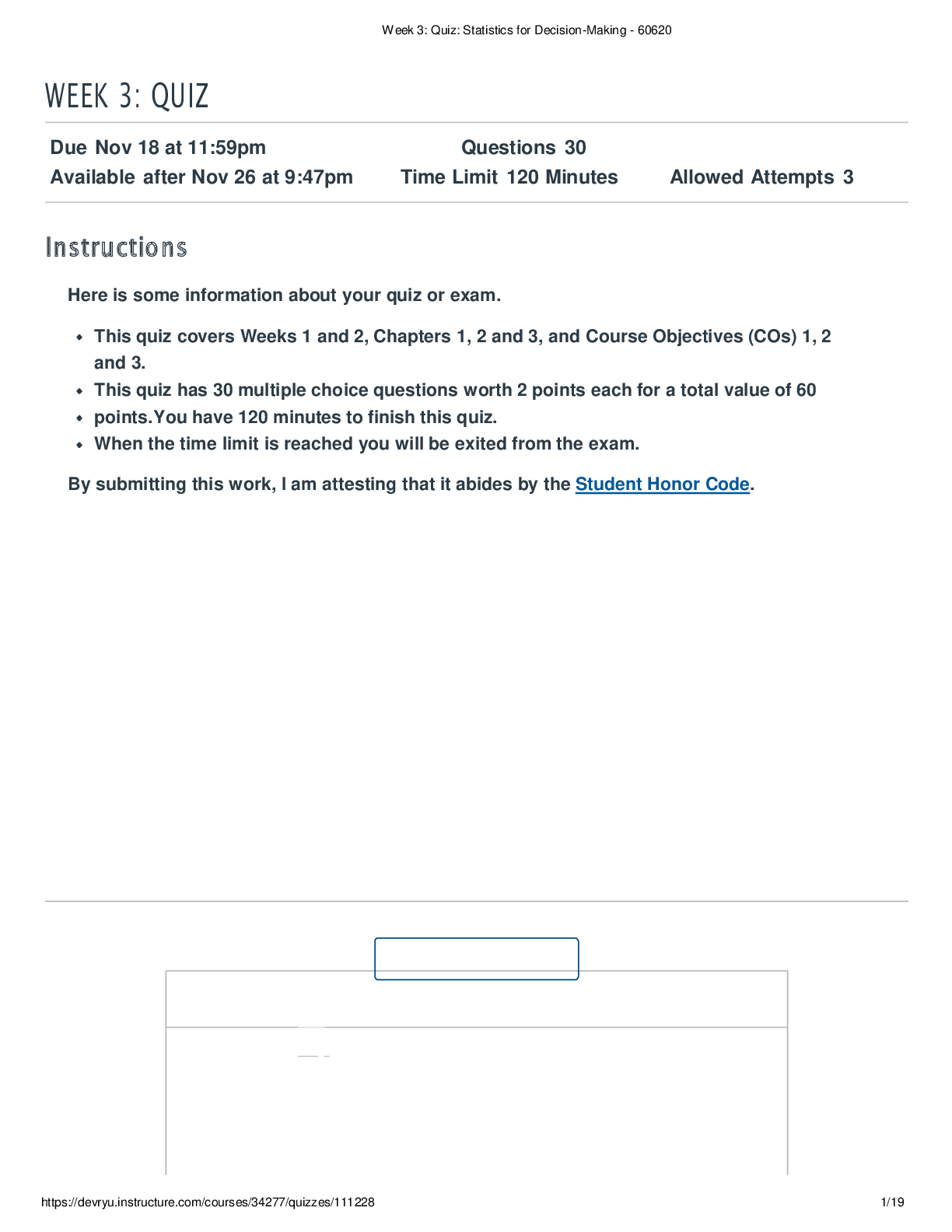

.png)










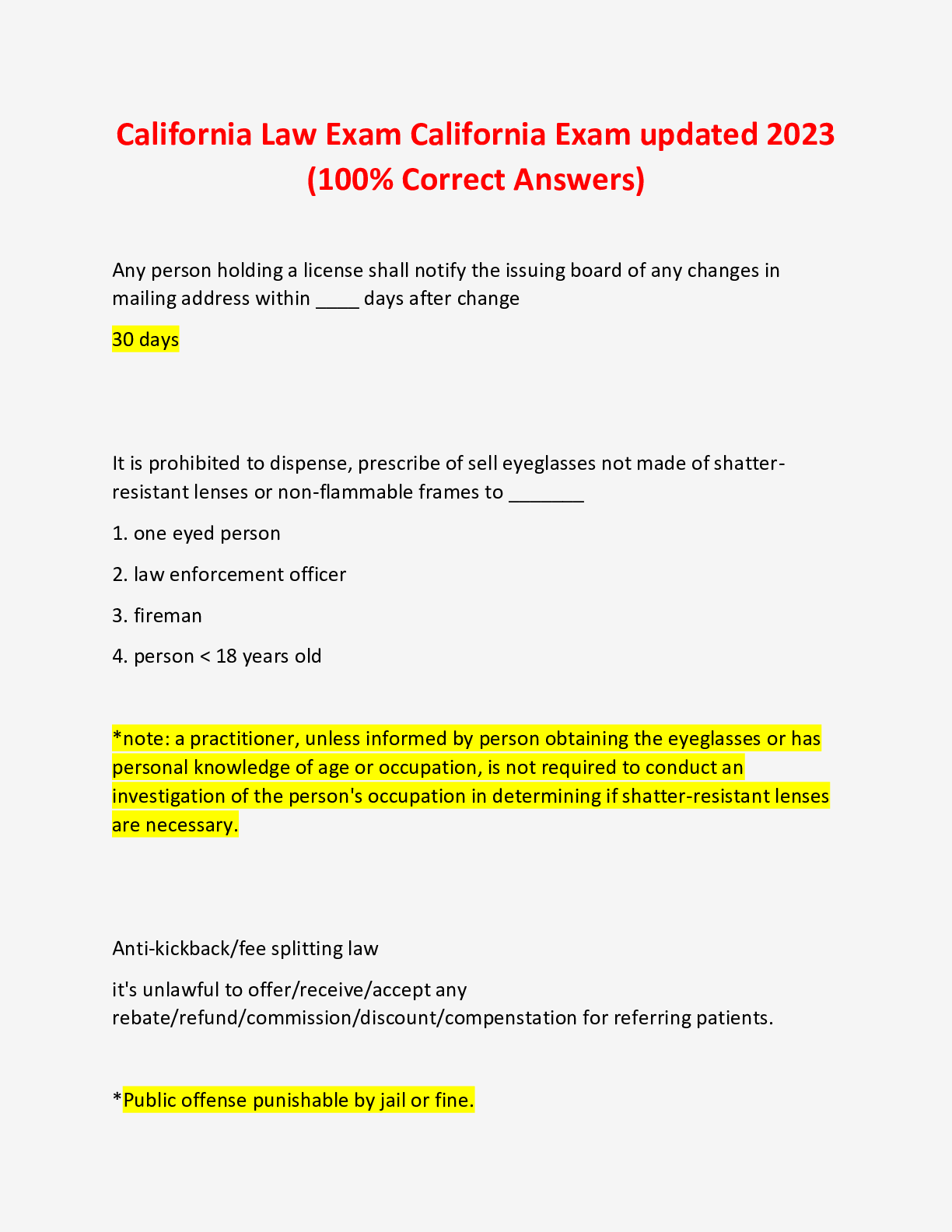


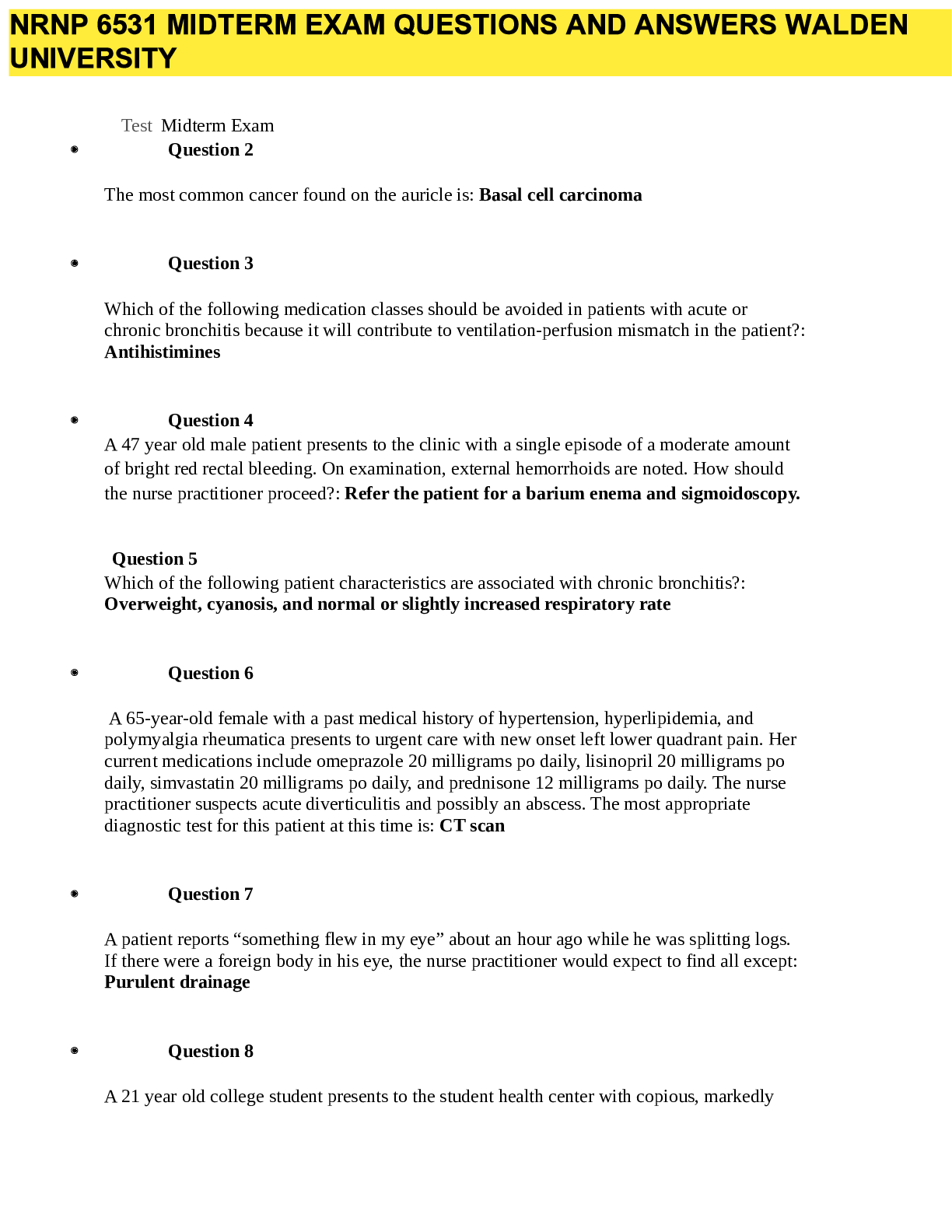

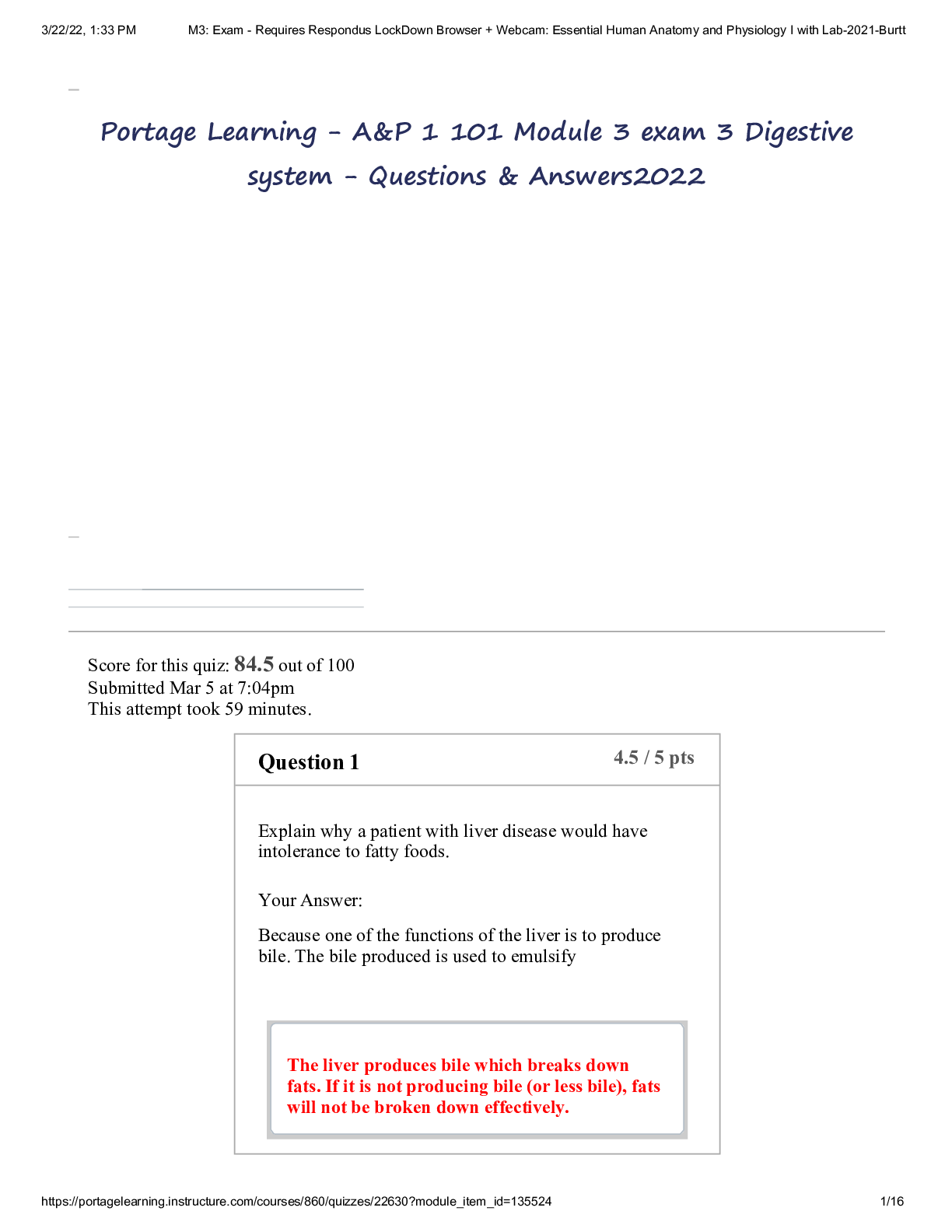
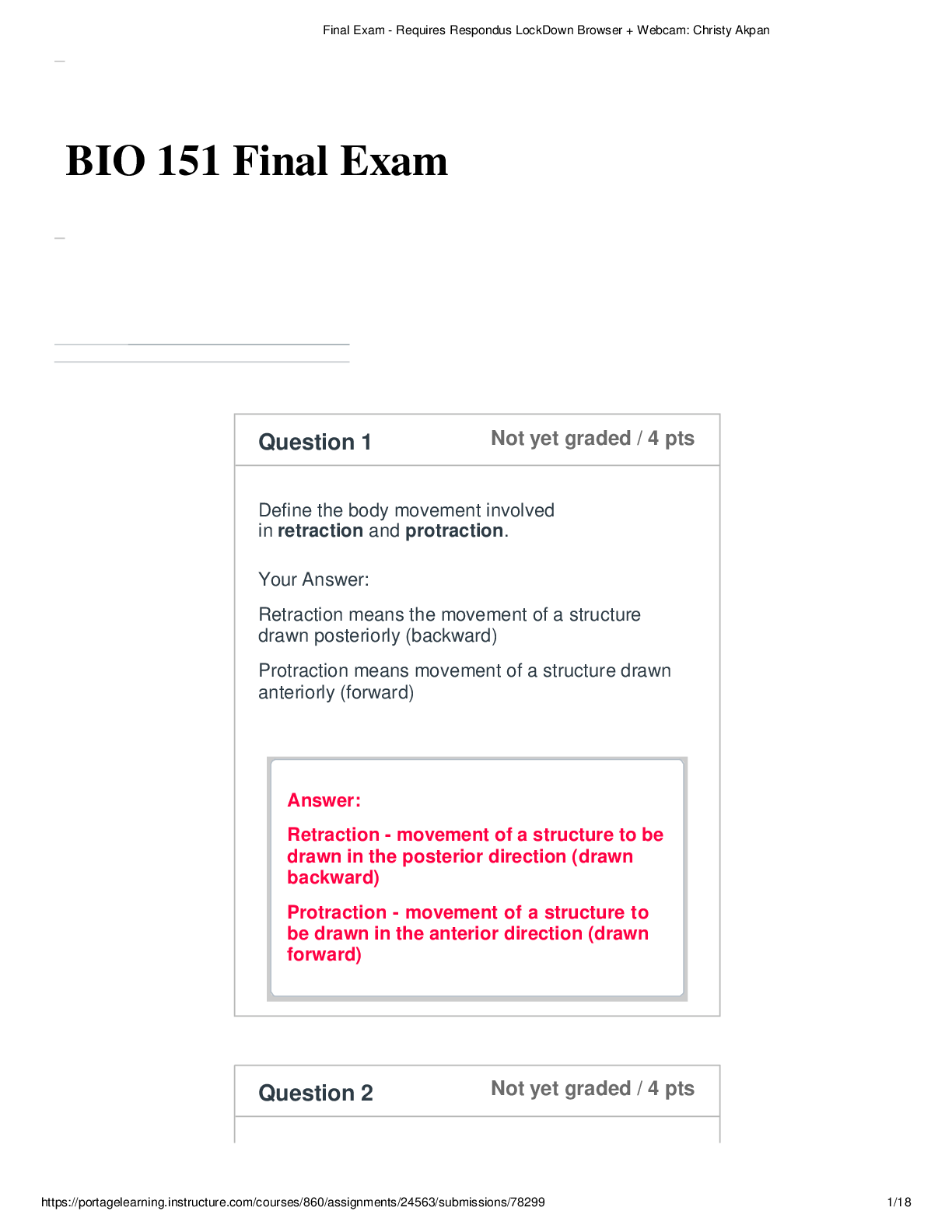
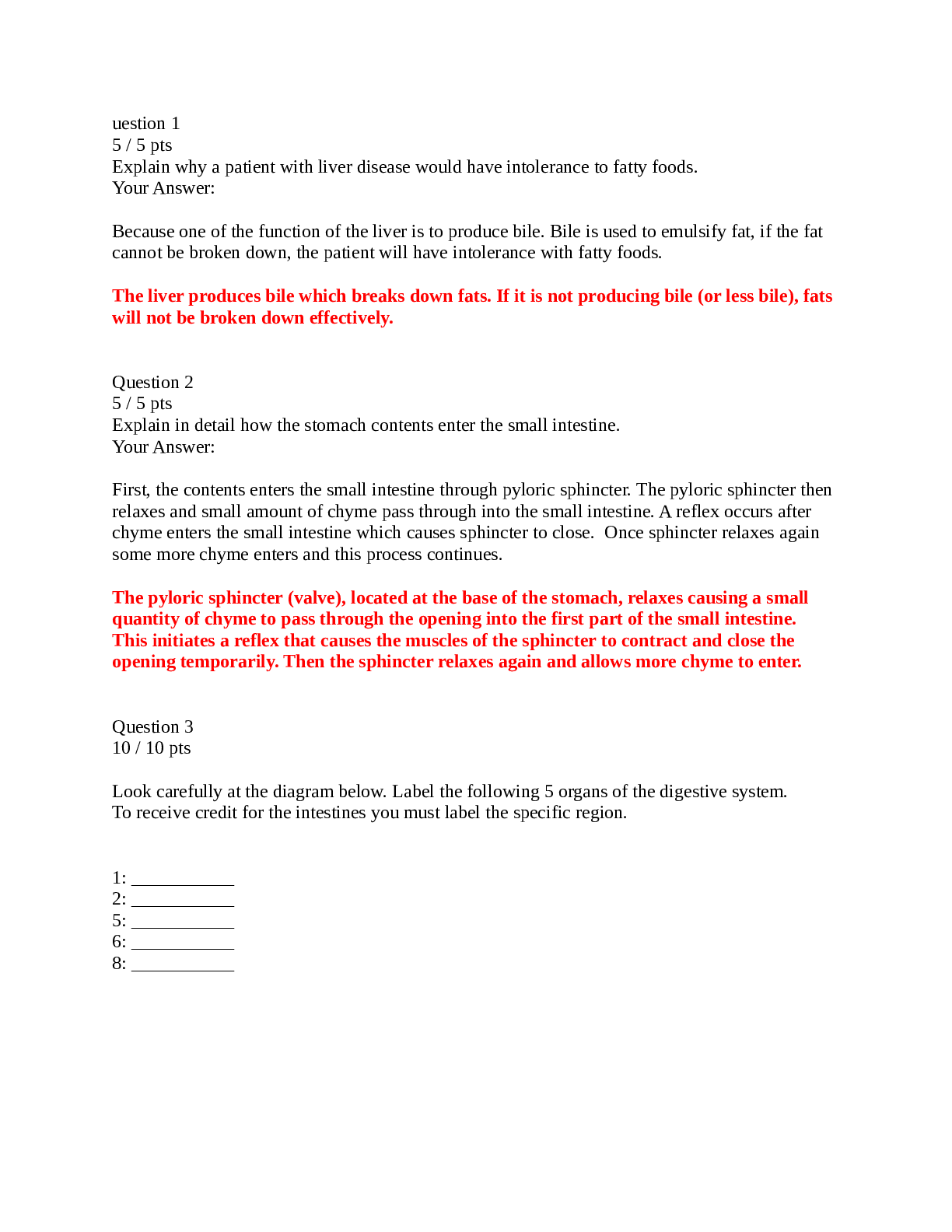
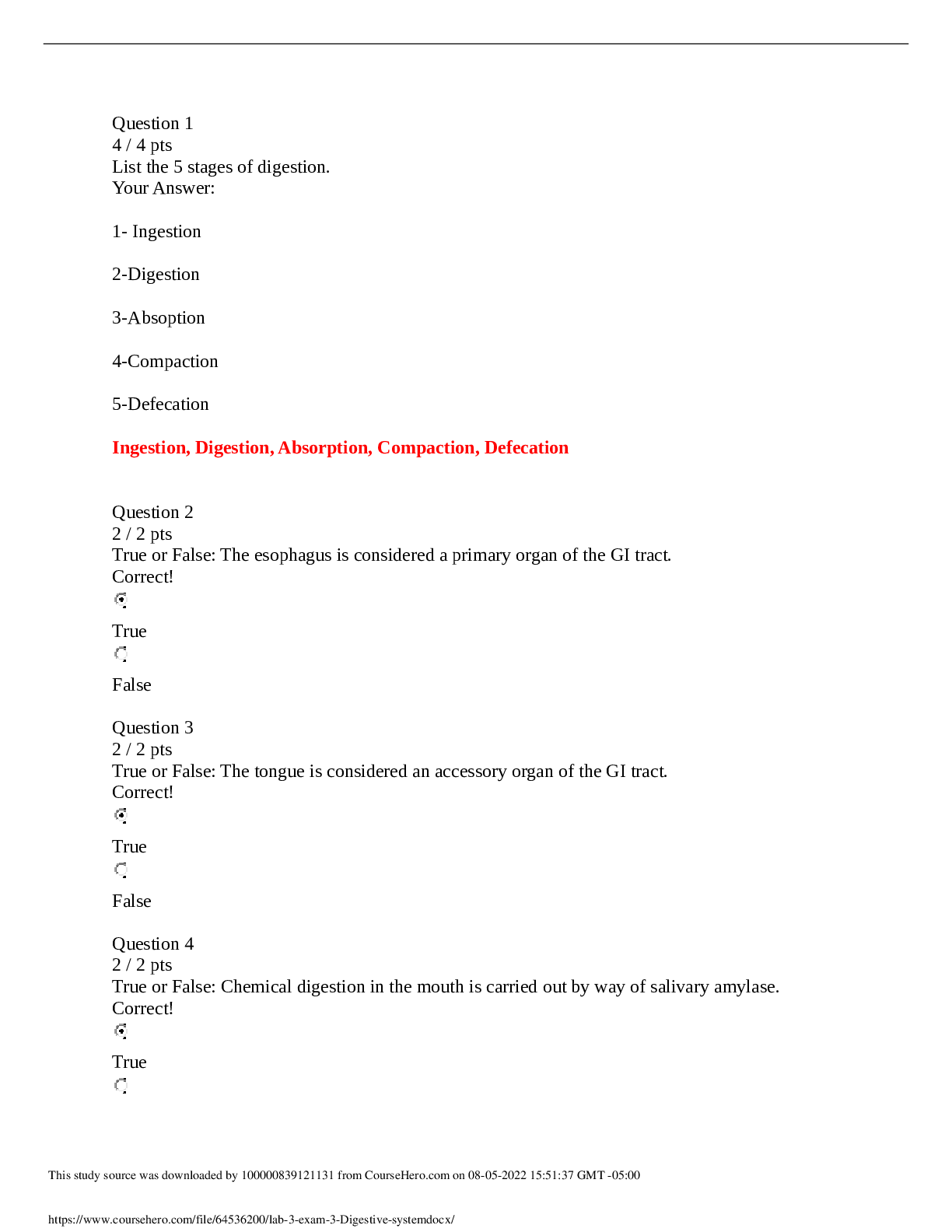
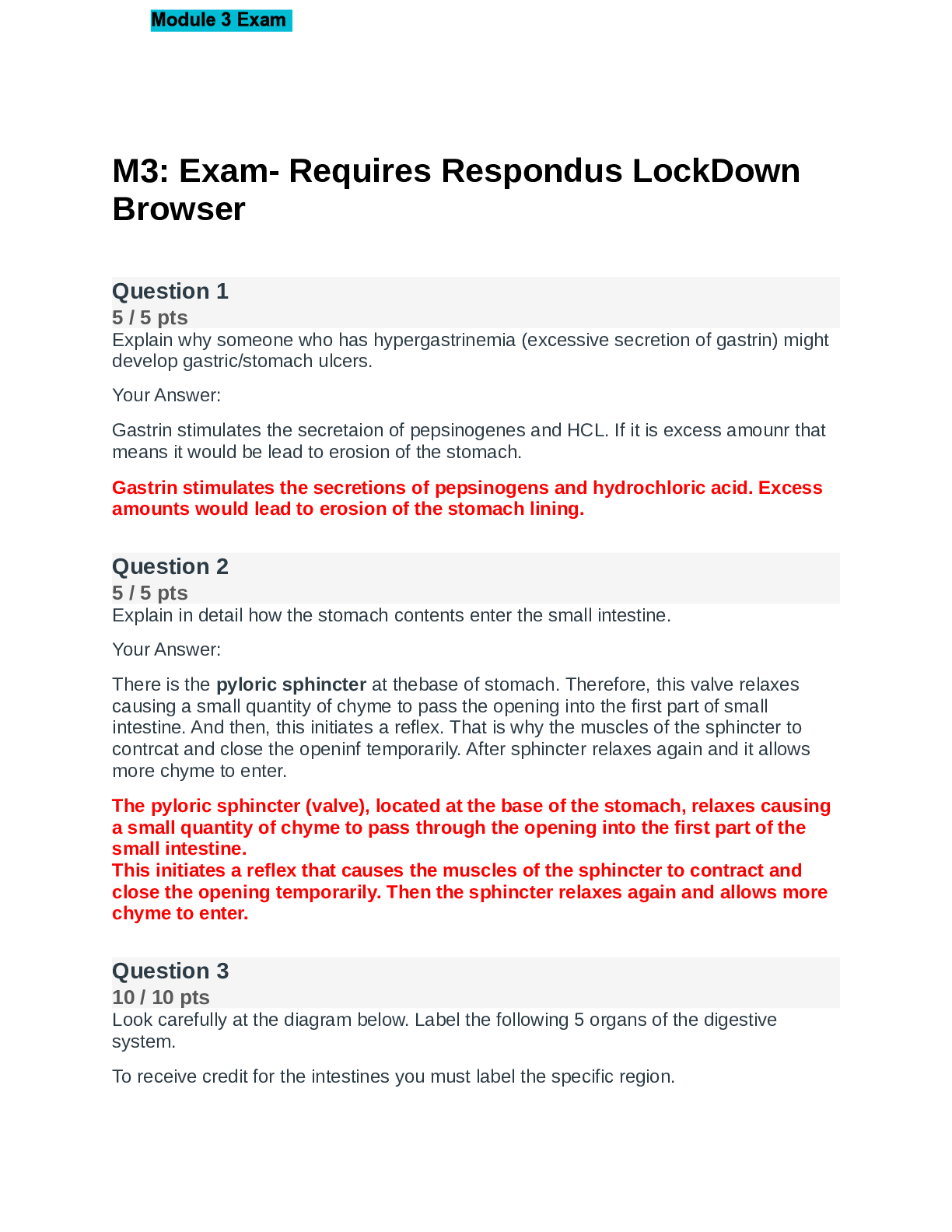
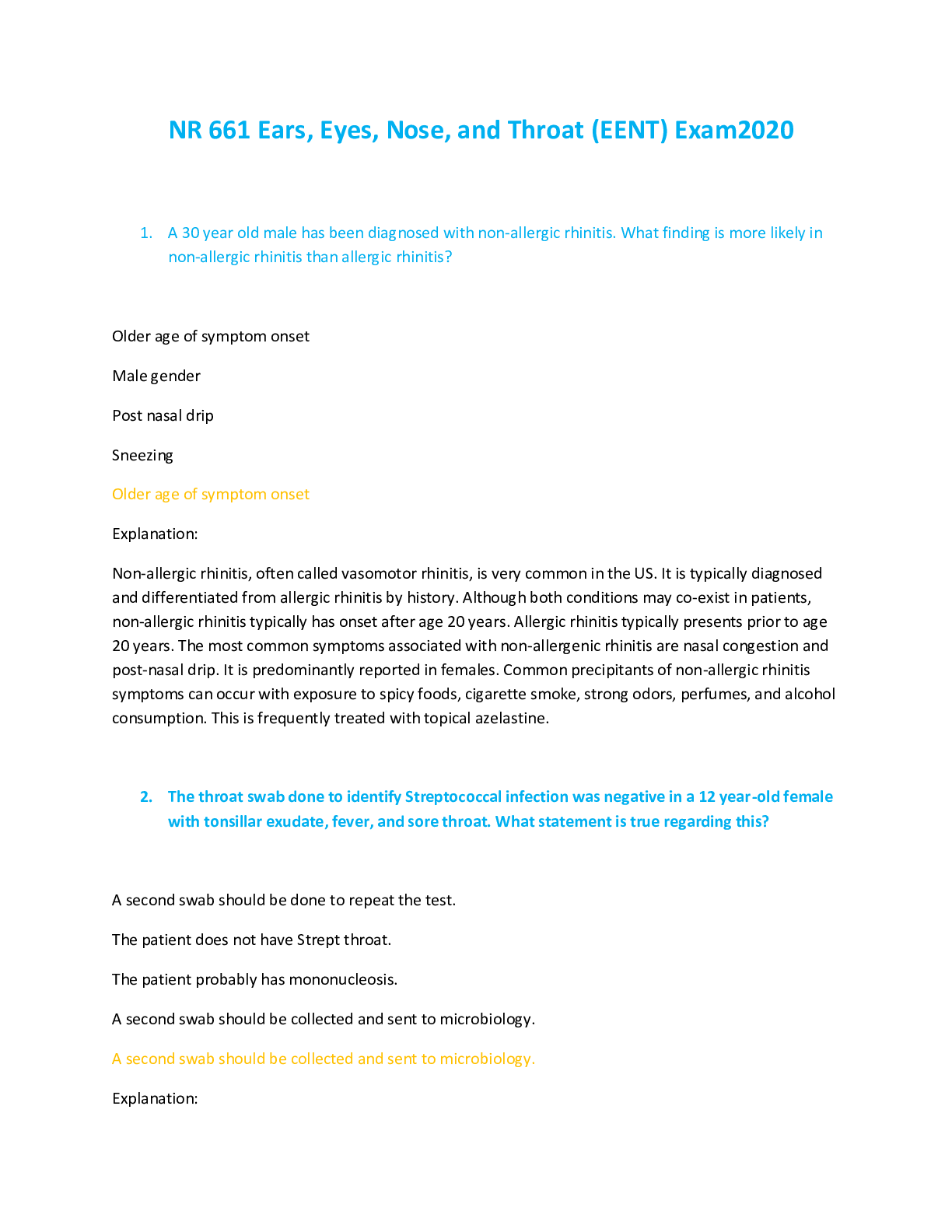

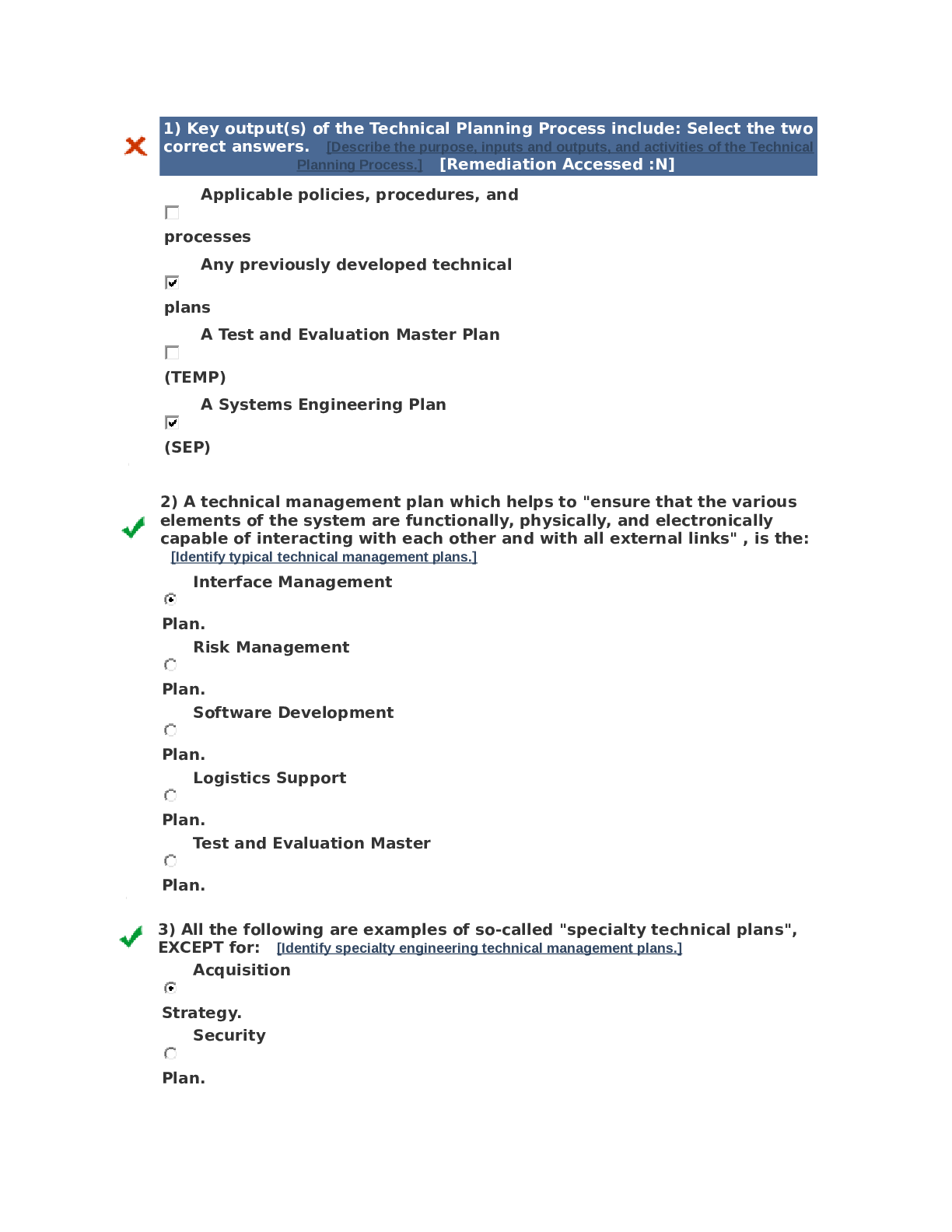
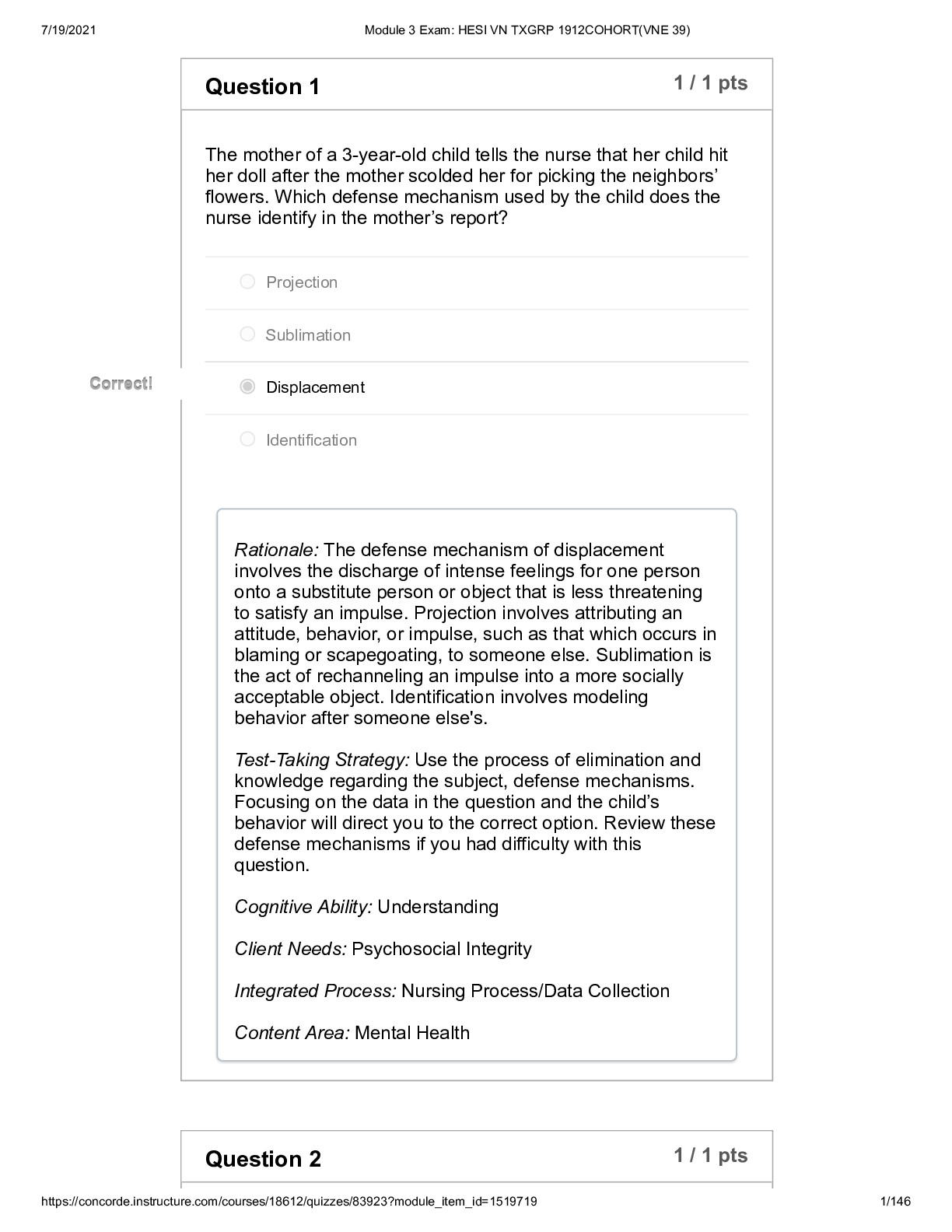
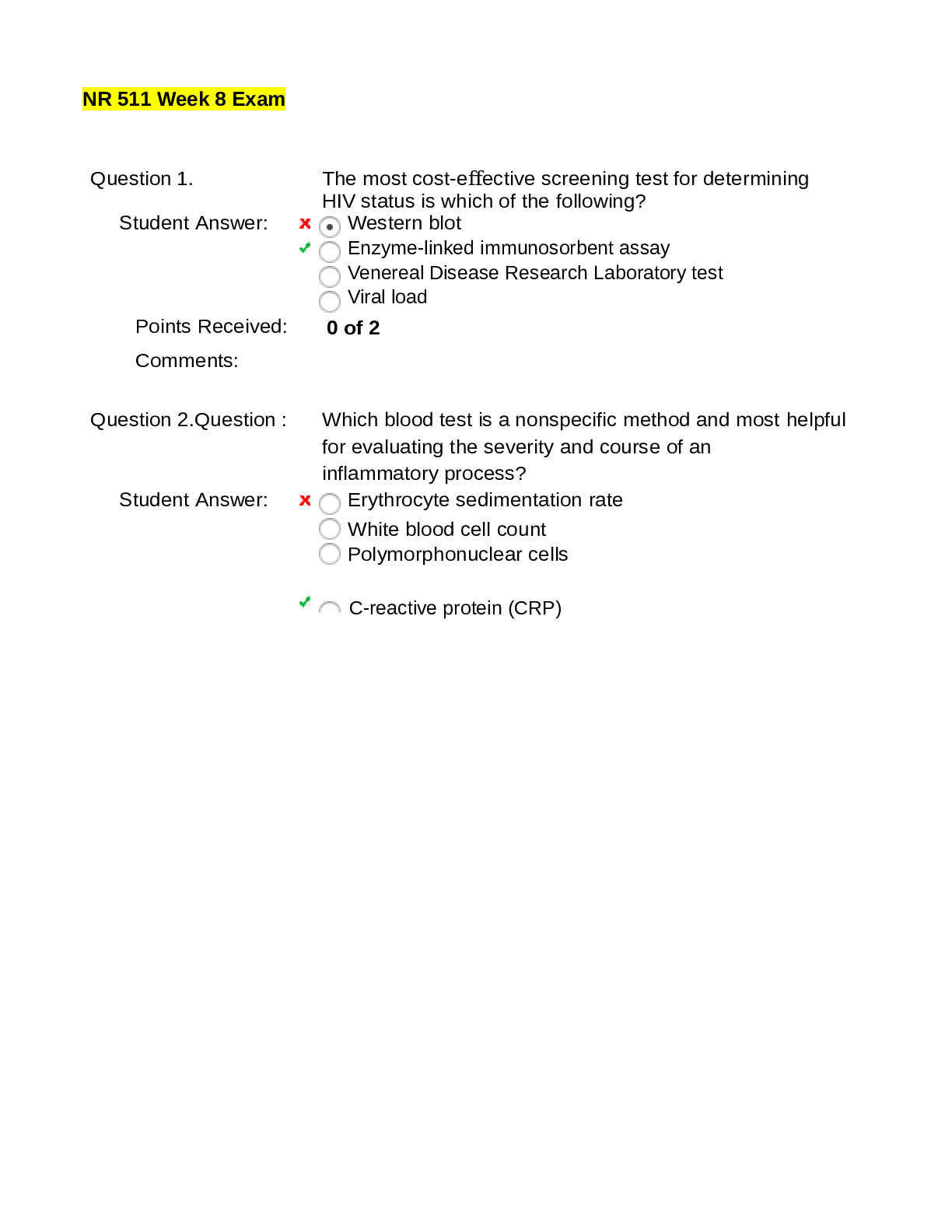
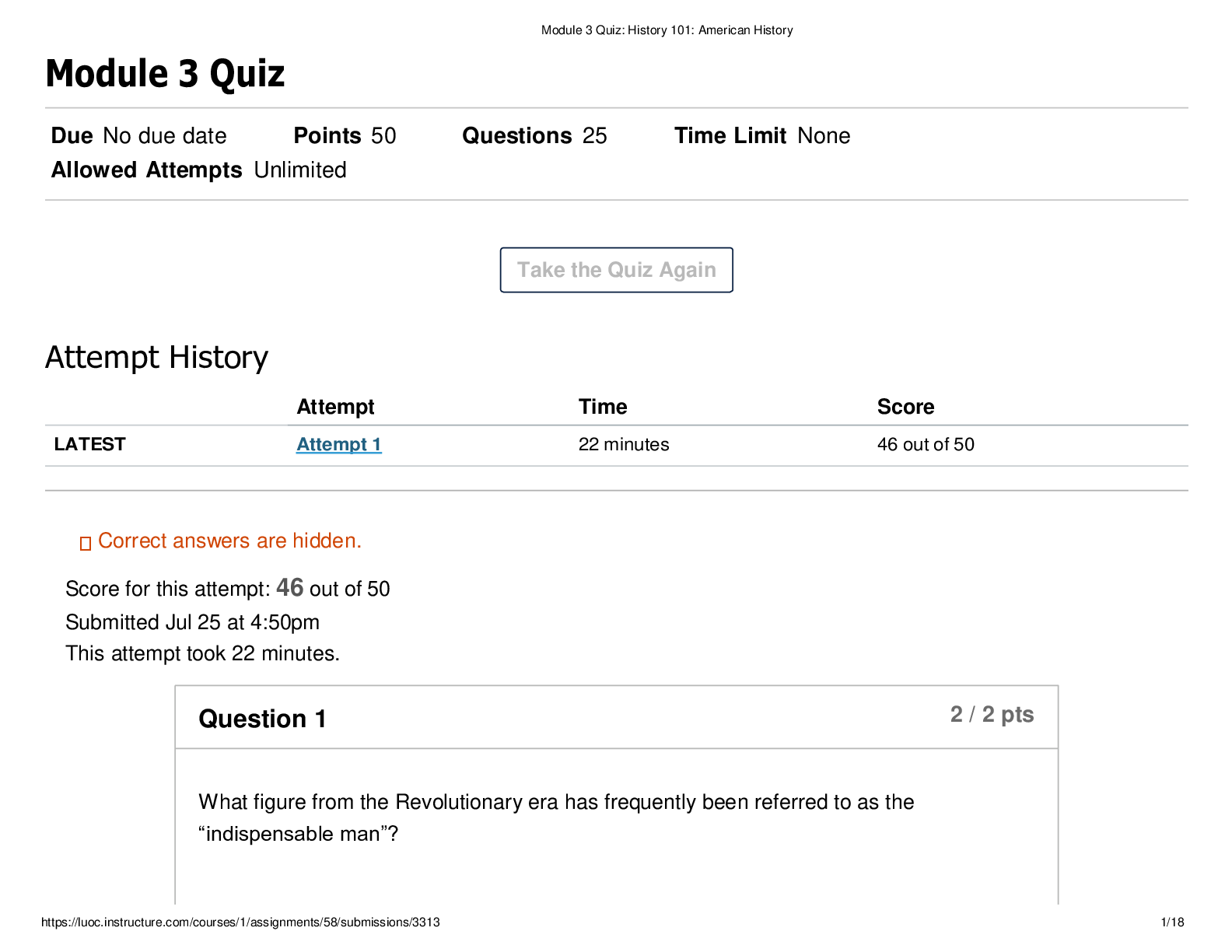
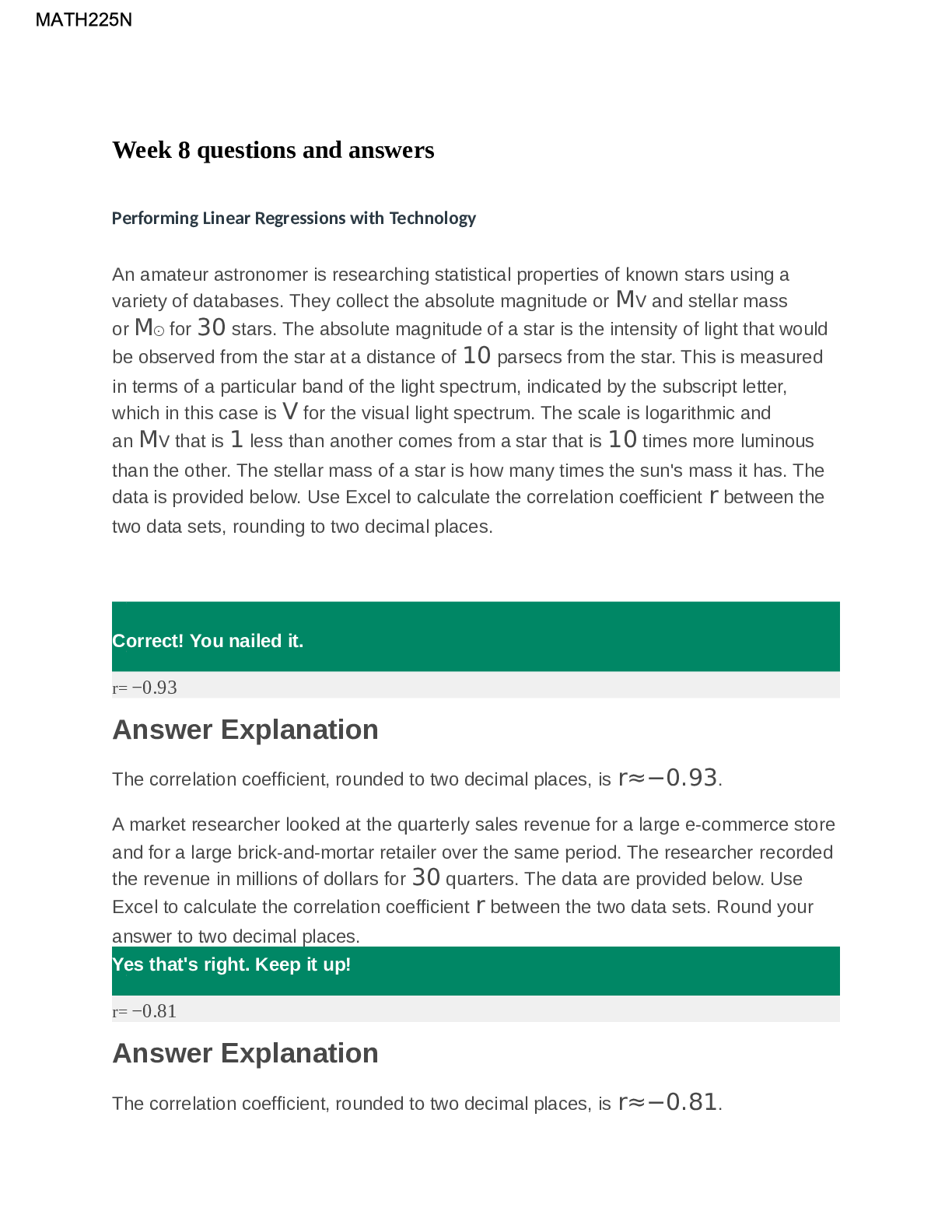

 (1).png)
